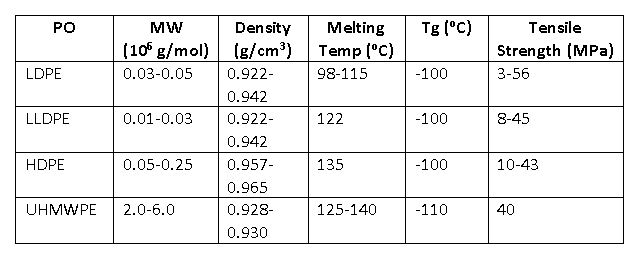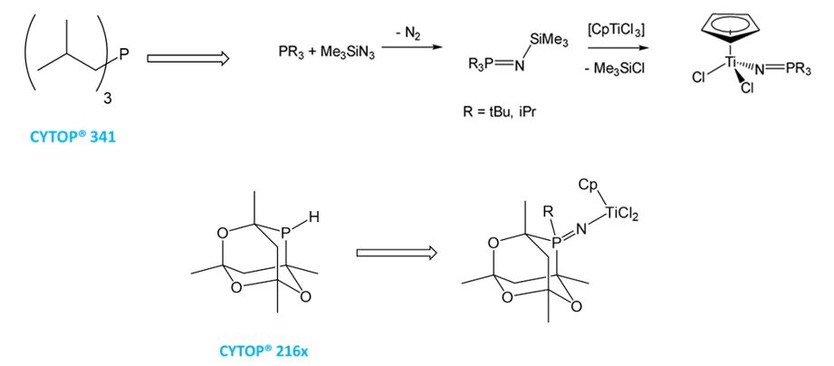'Product Blog'
CYTOP® Phosphines – Ideal Pre-ligands for Single Site Catalysts
Secondary and tertiary alkylphosphines are available now!
For over 30 years, there has been ongoing research and innovations to develop new and more efficient homogeneous catalysts for olefin polymerization (PO) reactions (1-4). Metallocenes have been a critical class of catalysts that have contributed to many advances in this field, and they continue to develop today. One sub class are single site catalysts which have gained popularity due to the high reactivity and selectivity. They are also modular with a variety of support ligands being employed, such as phosphines and phosphinimines. The continued development of homogeneous catalysts in this field are critical as POs have many industrial applications such as textile, packaging, transportation, electrical, marine and many more.
For polyethylene in particular (PE) there are many grades that are required – high density (HDPE), Low density (LDPE), linear low density (LLDPE) and ultra-high molecular weight (UHMWPE) to name a few (many copolymer systems exist, as well such as systems using polypropylene, UHMWPE/PP). These systems, while all starting from ethylene have different characteristics which are outlined below, and as such require different homogeneous catalysts and prep methods.

Table 1: Represented characteristics of PE grades
One unique class of catalysts are titanium phosphinimide catalysts. These catalysts, of form CpTi(NPR3)X2 and (R3PN)2TiX2, are active single site catalysts for the polymerization of ethylene (5). Single site catalysts have emerged as an important class as the feature high catalytic activity and selectivity. An important feature of these homogeneous catalysts is they are modular so one can alter the steric and electronic properties of the ligand set (representative examples below) (6,7). These systems can be produced from readily available commercial secondary and tertiary alkylphosphines such as CYTOP® 216x (Strem Catalog # 97-1310) and CYTOP® 341 (Strem Catalog # 97-5750). These can be converted to phosphinimine ligands that are effective single site catalysts.

Screening the ability of the systems for olefin polymerization has been performed under a variety of conditions (6,7). The phosphine based homogenous catalysts using the resulting phosphinimine ligands can produce polymers with PDIs (Polydispersity Index) ranging from 1.80 to 2.98 and Mw ranging from 96,000 to 580,000 depending on conditions and activator employed.
CYTOP® alkyl phosphines are readily available in high-purity at commercial and lab scales. Custom packaging and logistics support is available at commercial scale. To learn more about other ligands for catalysis, please refer to the Solvay offering at Strem or the Solvay website.
References:
- Dalton Trans. 2002, 467-475.
- Polym. Chem. 2011, 2, 1611-1623.
- Sustainable Materials and Technologies, 2020, 25, 2-29.
- European Journal of Molecular & Clinical Medicine, 2020, 7, 5624-5627.
- Organometallics, 1999, 17, 2046-2048.
- Organometallics, 2001, 20, 2303-2308.
- Organometallics, 2008, 27, 6343-6352.
Featured Product:
97-1310 2,4,6-Trioxa-1,3,5,7-tetramethyl-8-phosphaadamantane (~32% in xylene) [CYTOP® 216X ORGANOPHOSPHINE] (26088-25-5)
97-5750 Tri-i-butylphosphine, min. 98% [CYTOP® 341 ORGANOPHOSPHINE] (4125-25-1)
Related Products:
CYTOP Products
Phosphorus Ligands and Compounds Booklet
All products sold in collaboration with Solvay






